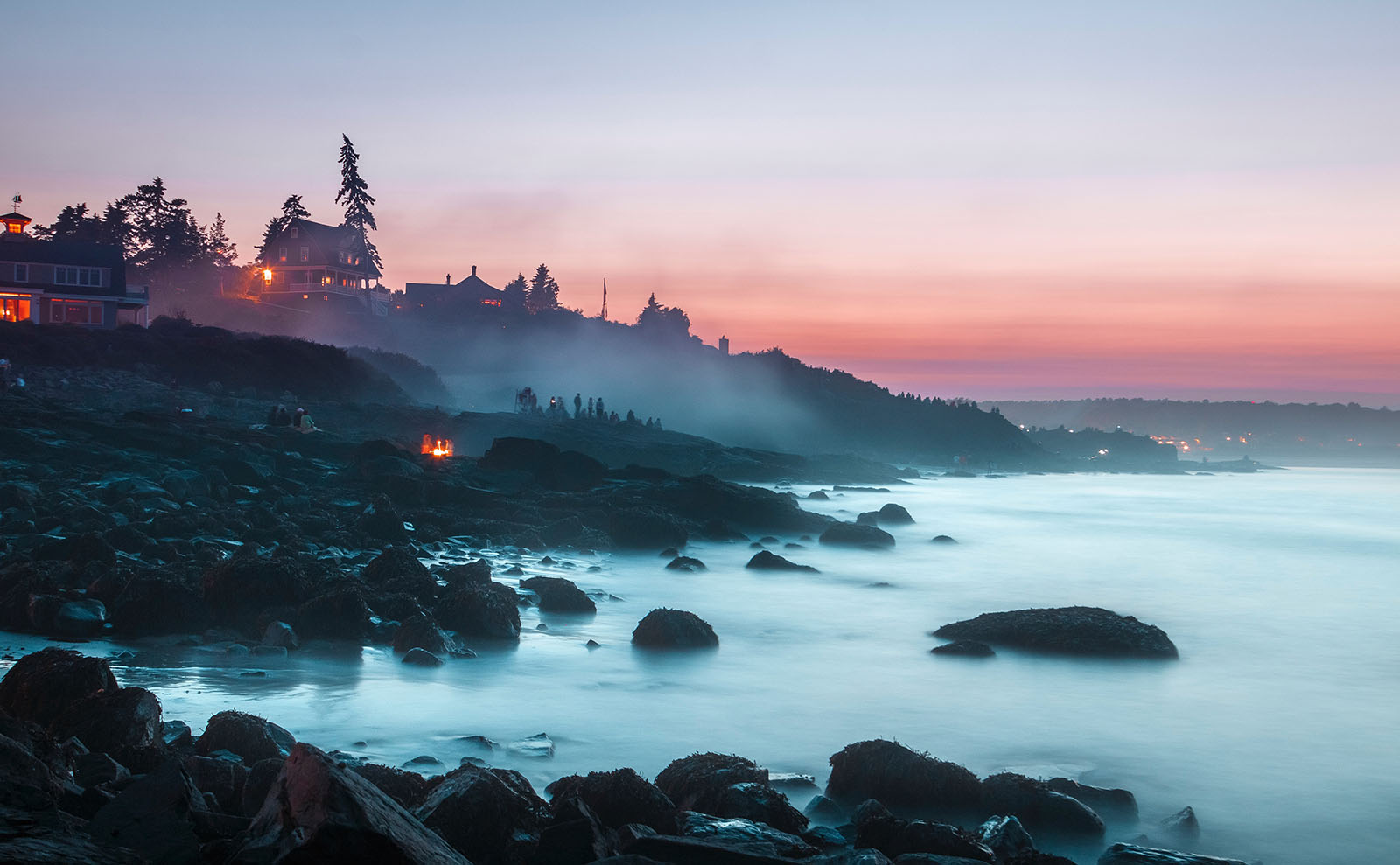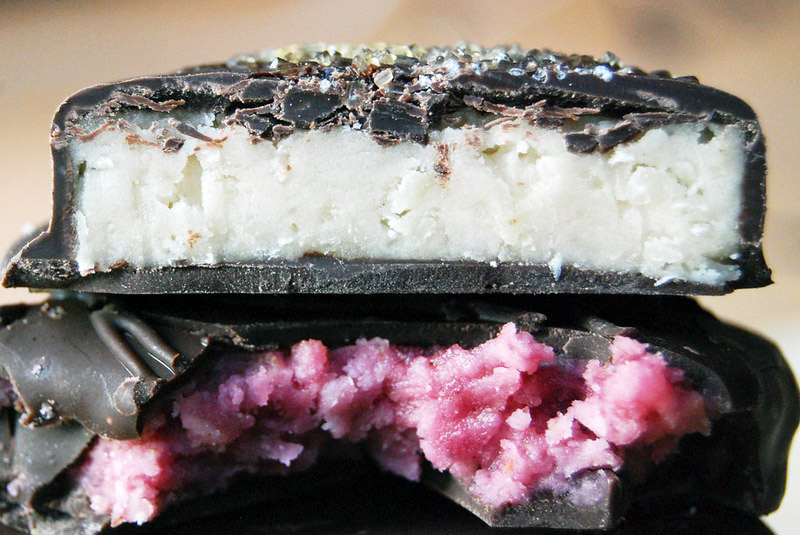
Armchair travel around the world!
Start your reading adventures with our FREE Reading Atlas.

- Around the World in 14 Books
- 7 Thrilling Book Series
- 6 Audiobooks That Are Like Theater For Your Ears



Food and drinks are some of the easiest ways — and the most fun— to vicariously experience another culture. When you add a great book to the mix, you've got the makings of a perfect evening. In Food+Fiction, we recommend a delicious read and a related recipe so you can try the taste of different destinations in your own kitchen.
This post is part of our Food+Fiction series.

Maine’s primary claim to culinary fame might be lobster rolls and clambakes on the beach. But don’t sleep on its contribution to the confectionary arts: tender handmade candy bars made from starchy potatoes, sweet coconut, and dark chocolate.
The novel Almost, Maine by John Cariani is the literary equivalent of a luscious bonbon. It’s sweet, complex, homey, and even better when shared with your favorite people. The novel tells the story of people falling into and out of love — sometimes literally — on a particular Friday night in winter when the temperature’s not too cold, and the sky is alight with dancing Northern Lights. It’s the kind of book that makes you want to be cozy, devour it in a sitting, then press it into the hands of someone else so you can talk about it. Possibly with a box of chocolates on the side.
The tale of the candy called Needhams is far less romantic, but it makes for a good yarn. Buckle up! The origin story of this old-timey candy features potato farming, tattooed buccaneers, potential cannibalism, and a tent revival circuit preacher.
It begins in 1846 in Ireland.
That’s the year that future preacher George C. Needham was born. According to lore (and his 1902 obituary in The New York Times), when Needham was 10 years old, he was loaded onto a ship bound for South America. During the long trans-Atlantic voyage, he was tortured by the captain and tattooed against his will. When he was finally taken ashore in Patagonia, he was captured by ‘cannibal Indians’ who intended to ‘make a feast of him.’ But those tattoos he hadn’t wanted? When his captors saw his fresh ink, they chose something else for dinner — and he eventually made his return to Ireland.
Back home, Needham became a preacher, then emigrated to Boston in 1868; we can only assume there were no nonconsensual tattoos on that crossing. He gained some fame as the ‘boy preacher’ and married a woman named Elizabeth. The two took their show on the road, traveling around the eastern United States to promote faith healing. He eventually wrote six books, toured Japan and China, and then expired in 1902 in Pennsylvania.
We probably wouldn’t know much about Needham now, were it not for one John Seavey, candy entrepreneur.
In the late 1800s, John owned Seavey’s Sweets in Portland, Maine. Or was it Auburn? Historians can’t be sure. What they do know is that in 1872, a cook at Seavey’s combined potatoes — in a nod to Maine’s status as the number-one producer of potatoes in the United States at the time — with coconut, sugar, and chocolate to create a silky-smooth square of happiness.
When Seavey tried the new treat, he apparently said, ‘Let’s call ‘em Needhams!’ in honor of the preacher. Or perhaps in a misguided tribute to Irish potatoes? Or in remembrance of a good time he had at a tent revival? Again, the details are lost to time.
But that new recipe was a hit. Eventually, Mainers started to make the candy at home, using potatoes left over from dinner. The popularity of homemade Needhams soared during the Great Depression when potatoes were cheap and plentiful, and a little something nice was sorely needed.
These candies are easy to make, even if you have zero candy-making experience. They’re traditionally made square, and this recipe gives you the option for two sizes: large (1 1/2-inch squares) or small (3/4-inch squares). Smaller candies take twice as long to coat with chocolate, but you finish with twice as many to share! You do you.

Makes 18 large or 36 small.
Prep. Line a pan with parchment paper. For large squares (1 1/2-inch), use a standard loaf pan; for small squares (3/4-inch), use an 8x8-inch square pan.
Cook the potato. Bring a pot of water to a boil and cook the potato whole until it’s tender all the way through when pierced with a fork. This can take about 30-40 minutes, depending on the size and shape of your spud. When it’s soft, let it cool enough to handle it, then remove the skin and put it through a ricer or food mill until smooth. You can also use a sturdy wooden spoon to smush the potato through a standard wire mesh strainer. Do not use a food processor! The potato will turn to glue.
Make the potato dough. Measure 1/3 cup of the mashed potato and place it in a medium bowl. Add the confectioners’ sugar, coconut, vanilla, and salt. Stir with a wooden spoon until combined; it should be a bit moist. If it’s too dry, keep stirring! Press the mixture into your prepared pan and freeze for 20-30 minutes. Remove the pan from the freezer and use a sharp knife to cut the block into even squares; keep them in the pan. Freeze again for 20-30 minutes.
Time for chocolate. Melt the chocolate in the microwave for 30-second intervals at 50% power or place the chocolate in a bowl set over a saucepan of simmering water; the bottom of the bowl should not touch the water. Either way, stir until the chocolate is melted, smooth, and glossy.
Big finish. Remove the pan from the freezer, lift the parchment out of the pan, and then separate the squares with the knife. One at a time, dip the candies into the melted chocolate, remove with a fork, and set them on the parchment to solidify. Needhams can be stored, covered, at room temp for 2 days or 4-5 days in the fridge (if they last that long).
Variations: For fun, you can add a few drops of food coloring during the ‘make the dough’ step. Or try sprinkling the top of the Needhams with a pinch of coarse salt or colored sprinkles after dipping in the chocolate.
There is a place in northern Maine that is so far north, it’s almost not in the United States. It’s almost in Canada. But not quite. Not many people live there. Not much seems to happen there. And the things that do happen there seem pretty ordinary. Especially to the people who live there.
But some extraordinary things did happen there once — on a Friday in the middle of the winter, not too long ago. Or maybe it was a long time ago. No one quite remembers.
Actually, no one is even sure that the extraordinary things even happened. And no one is even sure that the place actually exists.
But it’s somewhere we’ve all been.
It’s a place called Almost.’ — John Cariani
In the small town of Almost, Maine, on this particular Friday night, something unusual is happening. The Northern Lights are dancing in the sky, and the inhabitants of Almost are running straight into love, in all its colorful forms. The story unfolds in a series of linked vignettes. Like a real-life small town, all of the characters are connected to each other through friendship, romance, work, history, and proximity. Two teenagers — Ginette and her best friend Paul — are realizing that they are maybe more than just friends. As Ginette walks through town to think over this momentous change, she passes the town rec center, the Moose Paddy bar, the frozen lake where people ice skate, and a boarding house owned by Ma Dudley. As she passes each location, we get a peek at what’s happening to the people inside. {more}
This magical story of one special night (352 pages) was published in January of 2023 by Square Fish. The book takes you to rural Maine. Melissa read Almost, Maine and loved it; it wouldn't be on our site if she didn't recommend it.
Bookshop.org is an online bookstore with a mission to financially support independent bookstores and give back to the book community.
Top image courtesy of Justin Bisson Beck/Unsplash.
Want to keep up with our book-related adventures? Sign up for our newsletter!
Can you help us? If you like this article, share it your friends!
Strong Sense of Place is a website and podcast dedicated to literary travel and books we love. Reading good books increases empathy. Empathy is good for all of us and the amazing world we inhabit.
Strong Sense of Place is a listener-supported podcast. If you like the work we do, you can help make it happen by joining our Patreon! That'll unlock bonus content for you, too — including Mel's secret book reviews and Dave's behind-the-scenes notes for the latest Two Truths and a Lie.
Join our Substack to get our FREE newsletter with podcast updates and behind-the-scenes info — and join in fun chats about books and travel with other lovely readers.

We'll share enough detail to help you decide if a book is for you, but we'll never ruin plot twists or give away the ending.
Content on this site is ©2025 by Smudge Publishing, unless otherwise noted. Peace be with you, person who reads the small type.